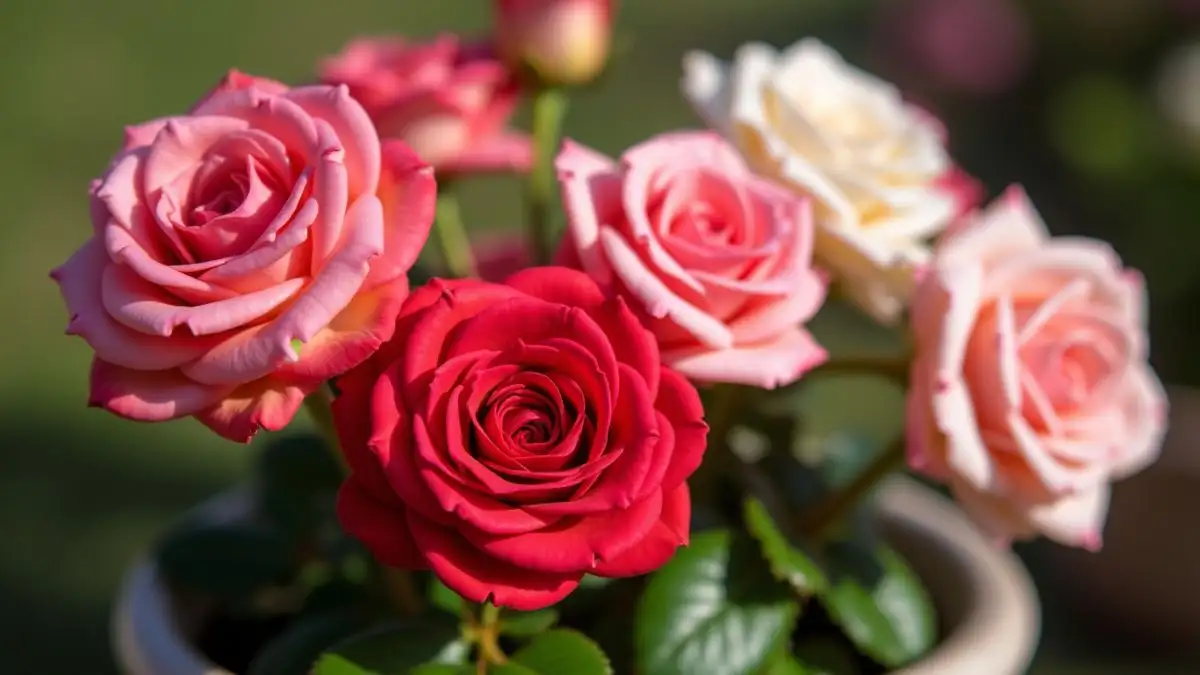Imagine stepping into your garden and being greeted by a vibrant array of miniature roses, their delicate petals adding charm and elegance to your outdoor or indoor space. Whether you’re new to gardening or a seasoned pro, miniature roses can brighten up any area with their stunning blooms and manageable size. This comprehensive guide will provide you with seven powerful tips to ensure your mini rose plants thrive and bloom beautifully all year round, while helping you make the most of these delightful flowers.
Table of Contents
What Are Miniature Roses?
Mini roses are a delightful addition to any garden, prized for their compact size and stunning beauty. These little wonders typically grow between 6 to 18 inches tall, making them perfect for small gardens, patios, or even indoor spaces. Unlike standard rose varieties, miniature roses pack all the charm and elegance of their larger counterparts into a more manageable size. Their versatility and vibrant appeal make them a favorite among gardeners worldwide.
Why Choose Miniature Roses?
When space is limited, miniature roses shine. Their versatility makes them suitable for:
- Small balconies or patios.
- Containers and hanging baskets.
- Accent pieces in garden borders.
Popular varieties include:
- Baby Boomer: Bright pink blossoms that catch the eye.
- Be My Valentine: A classic red rose, perfect for romantic gestures.
- Cinderella: Soft white petals ideal for cooler climates.
Mini roses not only add charm but also require less maintenance than their full-sized counterparts, making them ideal for gardeners of all experience levels. Additionally, their compact size and variety of colors make them a popular choice for gifting and decorative purposes.
Tip #1: Choosing the Right Miniature Rose Variety
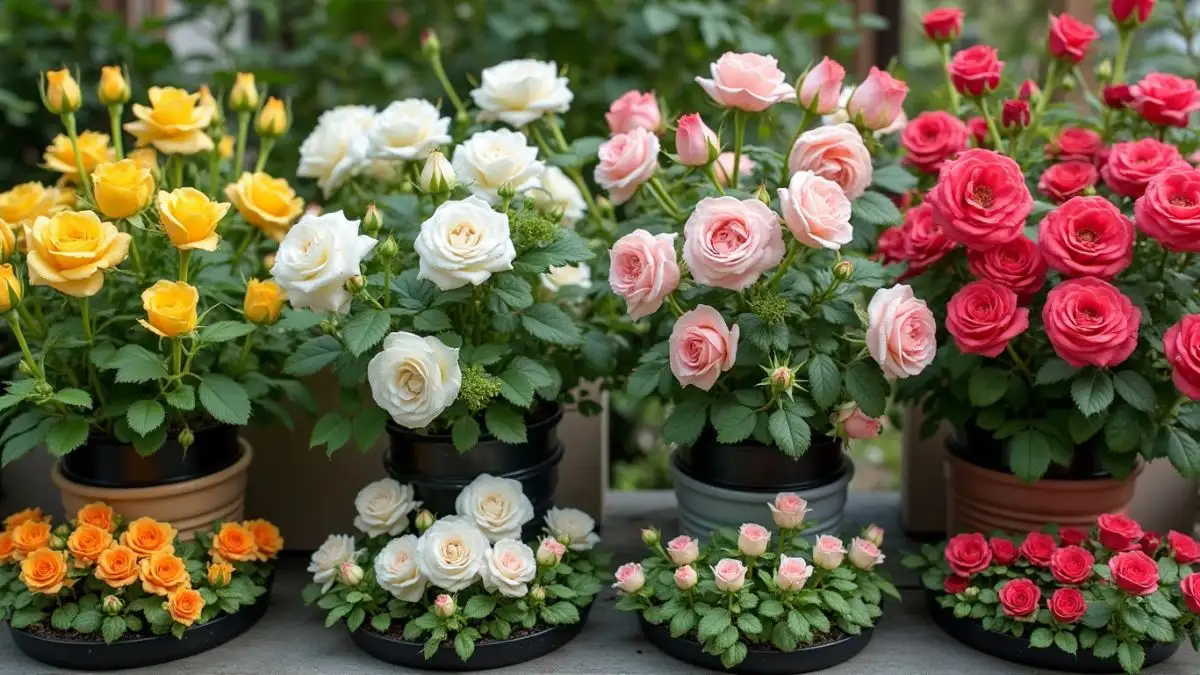
Your journey to perfect blooms begins with selecting the right variety of mini roses. Start by considering your garden’s environment, your personal preferences, and how much time you can dedicate to care and maintenance.
Factors to Consider:
- Climate: Select a variety suited to your region’s weather.
- Warm climates thrive with varieties like ‘Rise n Shine’ and ‘Little Artist’.
- Cooler climates favor ‘Cinderella’ or ‘Overnight Scentsation’.
- Purpose: Are you looking for fragrance, vibrant color, or decorative purposes?
- Color Preference: Miniature roses come in a rainbow of hues, from vivid reds to soft whites and yellows.
Quick Reference Table:
| Variety | Best For | Color | Fragrance |
| Baby Boomer | Compact Spaces | Pink | None |
| Be My Valentine | Gifting | Red | Mild |
| Rise n Shine | Warm Climates | Yellow | Strong |
| Cinderella | Cooler Climates | White | Mild |
Choosing the right variety sets the foundation for vibrant blooms. Researching the specific needs of your chosen variety ensures your mini roses will thrive.
Tip #2: Preparing the Perfect Soil
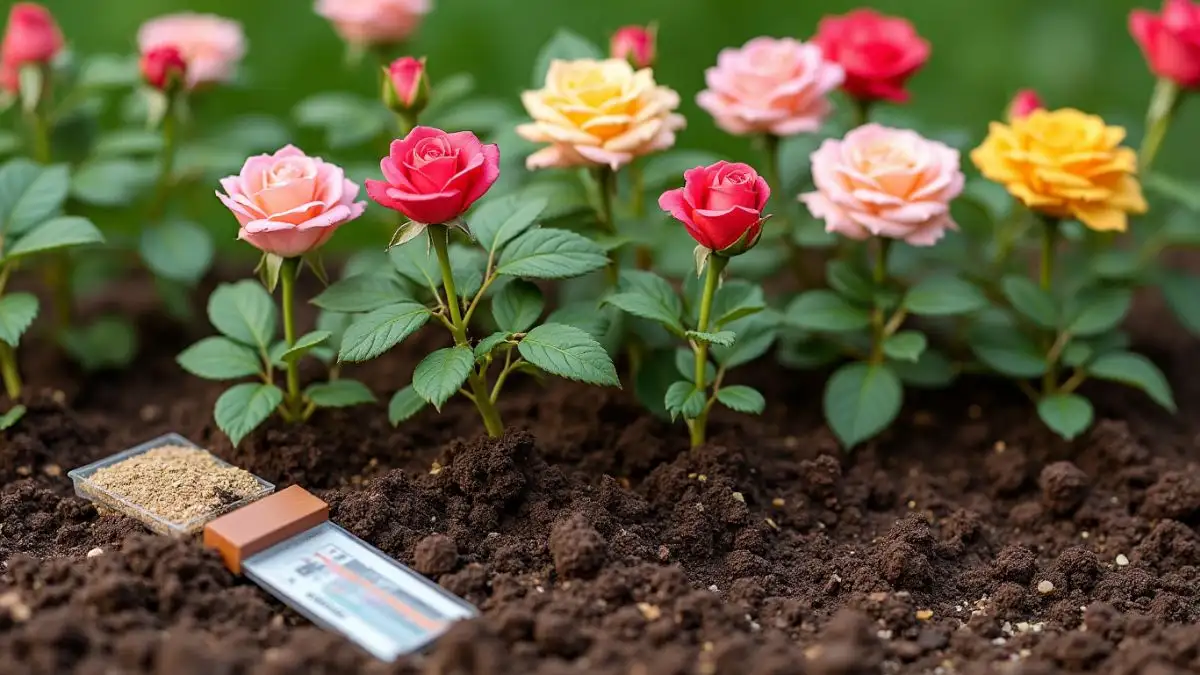
Healthy soil is the cornerstone of successful miniature rose gardening. These plants thrive in nutrient-rich, well-draining soil with a slightly acidic pH level.
How to Prepare Soil for Miniature Roses:
- pH Level: Aim for a pH of 6.0 to 6.5.
- Composition:
- 50% loam.
- 30% organic matter such as compost or aged manure.
- 20% sand for drainage.
- Additives:
- Bone meal boosts phosphorus, essential for blooms.
- Perlite or vermiculite improves aeration and root growth.
To test your soil’s pH, use a home testing kit or consult a local gardening center. Adjusting the pH is simple: add lime to increase alkalinity or sulfur to lower it. Well-prepared soil ensures your miniature rose bushes have the best start.
Adding mulch around the base of the plant can also help retain moisture, regulate soil temperature, and reduce weed growth. Regularly amending the soil with organic matter keeps it nutrient-rich and supports healthy plant growth.
Tip #3: Mastering the Art of Watering
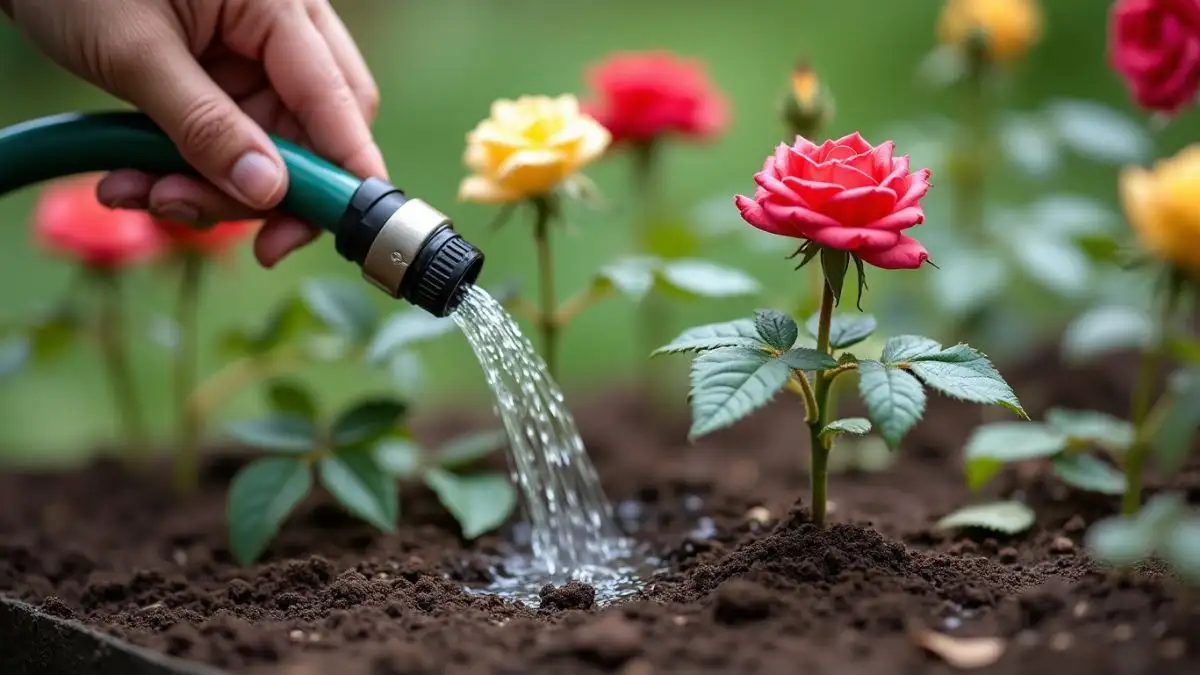
Watering is crucial for healthy mini rose plants. Overwatering or underwatering can lead to poor blooms or plant stress. Understanding the water needs of your mini roses is essential for their overall well-being.
Best Practices for Watering:
- Frequency: Water 2-3 times a week during the growing season. During cooler months, cut back watering to once per week.
- Method:
- Use a soaker hose for deep watering to reach the roots.
- Avoid wetting leaves to prevent fungal diseases like black spot.
- Test Moisture: Insert your finger about an inch into the soil to check. Water when the soil feels dry to the touch.
Signs of Improper Watering:
- Overwatering: Yellowing leaves and soggy soil.
- Underwatering: Wilting and dry, cracked soil.
Maintaining consistent moisture while avoiding waterlogged roots ensures your roses thrive. During hot summer months, monitor soil moisture more frequently to prevent dehydration.
Tip #4: Ensuring Optimal Light Conditions
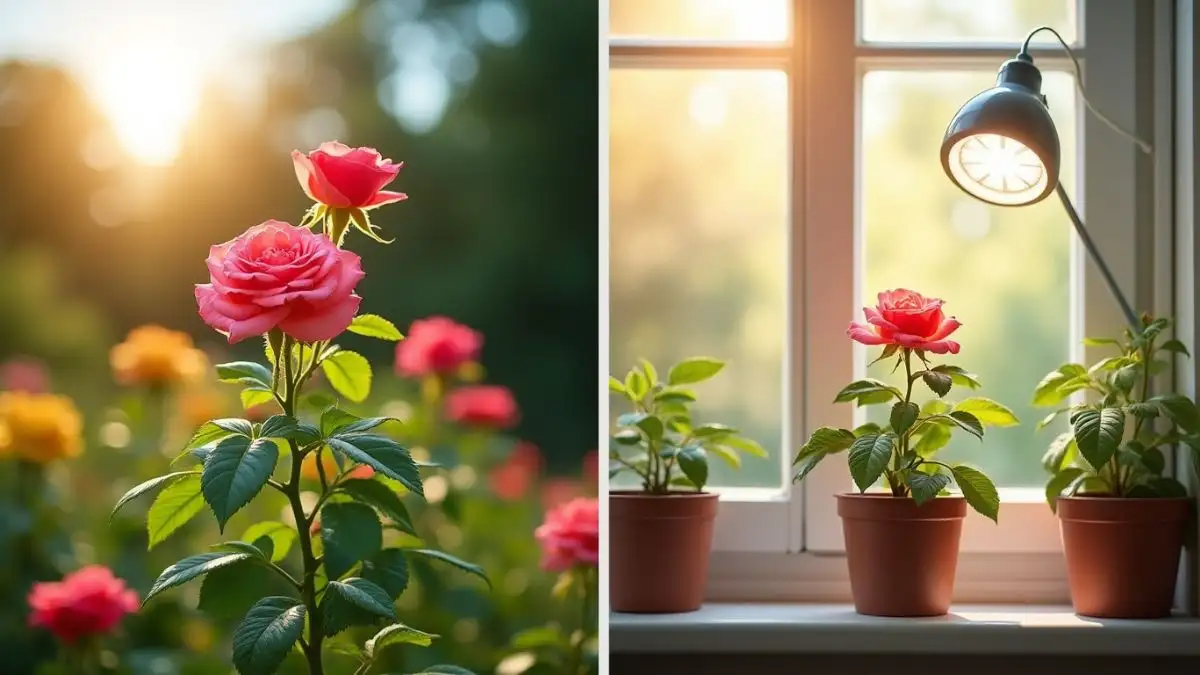
Mini roses are sun lovers. Without adequate light, their blooms can become sparse and dull. Ensuring they receive the right amount of sunlight is crucial for their growth and flowering.
Light Requirements:
- Outdoor Roses: Place them where they receive 6-8 hours of direct sunlight daily.
- Indoor Roses:
- Use a south-facing window for maximum sunlight.
- If natural light is lacking, consider using grow lights.
Tips for Seasonal Adjustments:
- During hot summers, protect your plants from harsh afternoon sun using shade cloths.
- In winter, relocate potted roses indoors to avoid frost damage.
If your roses are not blooming as expected, insufficient sunlight may be the issue. Ensure they’re placed in an optimal location for consistent growth.
Tip #5: Fertilizing Miniature Roses the Right Way
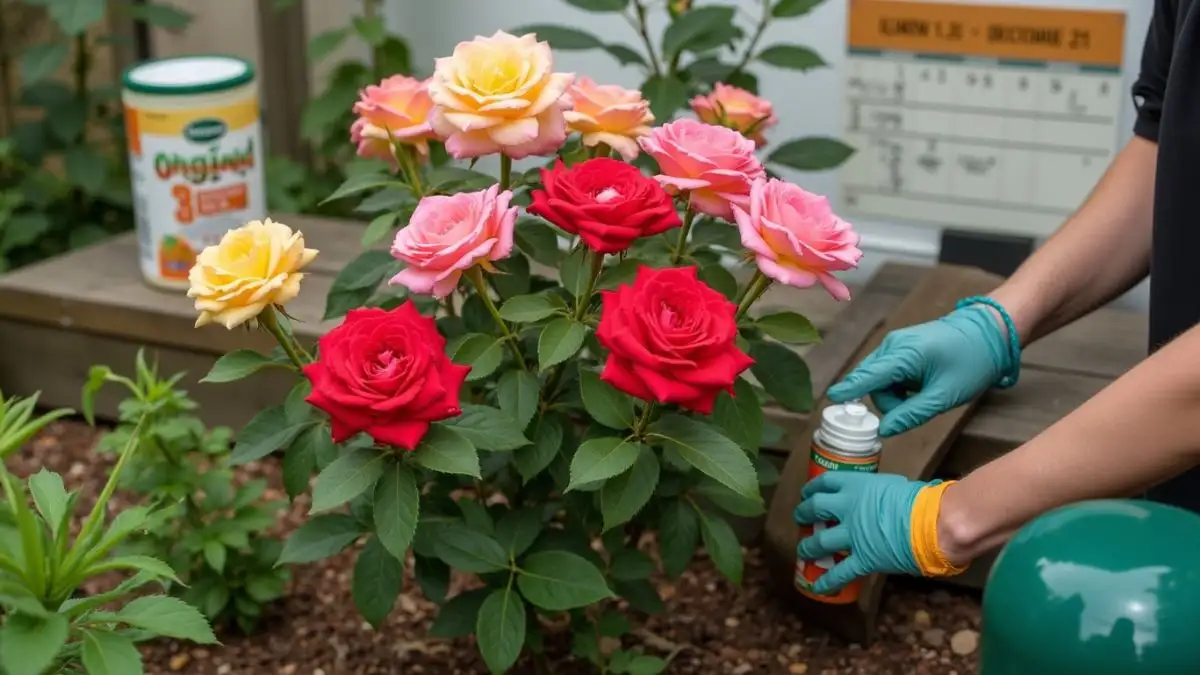
Fertilizing is essential for vibrant blooms and healthy growth. Mini roses are heavy feeders and require regular nourishment to thrive. The right fertilizer application can significantly impact their health and flowering potential.
Best Fertilizers for Miniature Roses:
- Balanced (10-10-10) fertilizers.
- Organic alternatives such as fish emulsion or compost tea.
Fertilizing Schedule:
- Fertilize every 4-6 weeks throughout the growing season.
- Reduce feeding during dormancy in winter.
Common Fertilizer Mistakes:
- Over-fertilizing can lead to salt buildup in the soil, which harms roots.
- Under-fertilizing results in stunted growth and fewer blooms.
Proper feeding gives your mini roses the nutrients they need for continuous flowering. Always follow package instructions for application to avoid overfeeding.
Tip #6: Pruning for Perfection
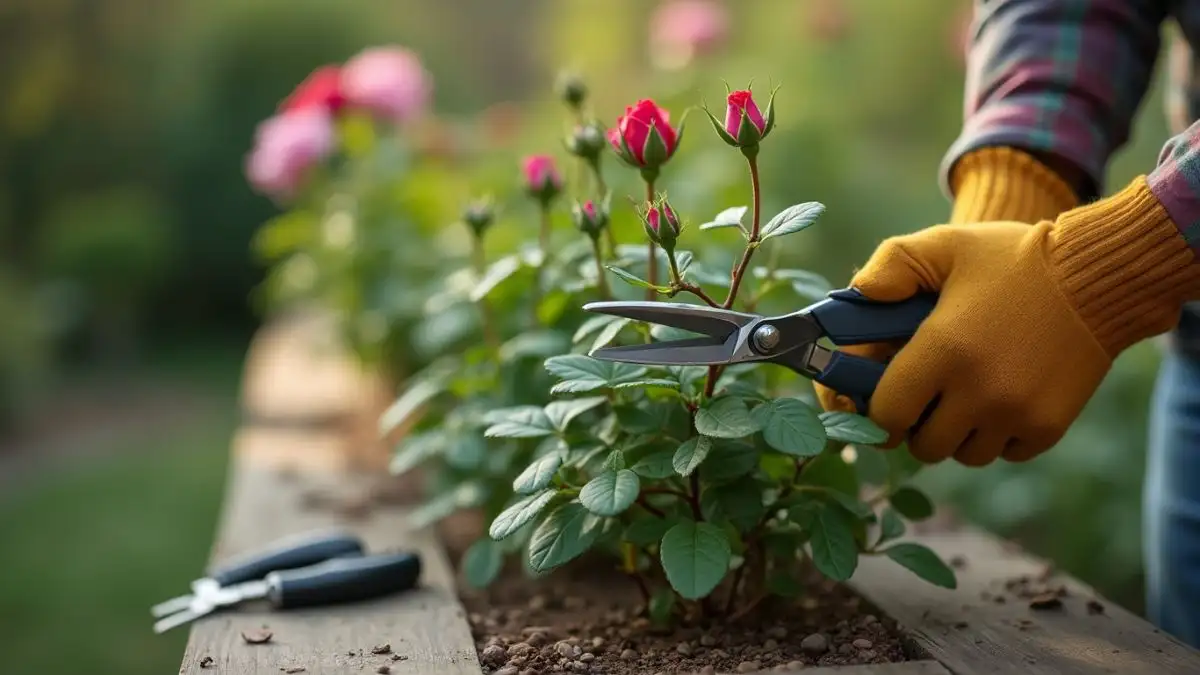
Pruning is essential to maintaining the shape and health of your miniature rose plant. This process removes dead or diseased branches and encourages fresh growth.
How to Prune Miniature Roses:
- Use sharp, sterilized pruning shears.
- Remove any dead, diseased, or crossing branches.
- Trim back stems to a healthy bud pointing outward.
- Shape the plant to maintain its compact form.
When to Prune:
- Prune in late winter or early spring, right before new growth begins.
- Following the initial bloom cycle to promote additional flowering.
Pruning keeps your mini roses healthy and blooming throughout the season. Regular pruning also helps prevent pests and diseases from taking hold.
Tip #7: Managing Pests and Diseases
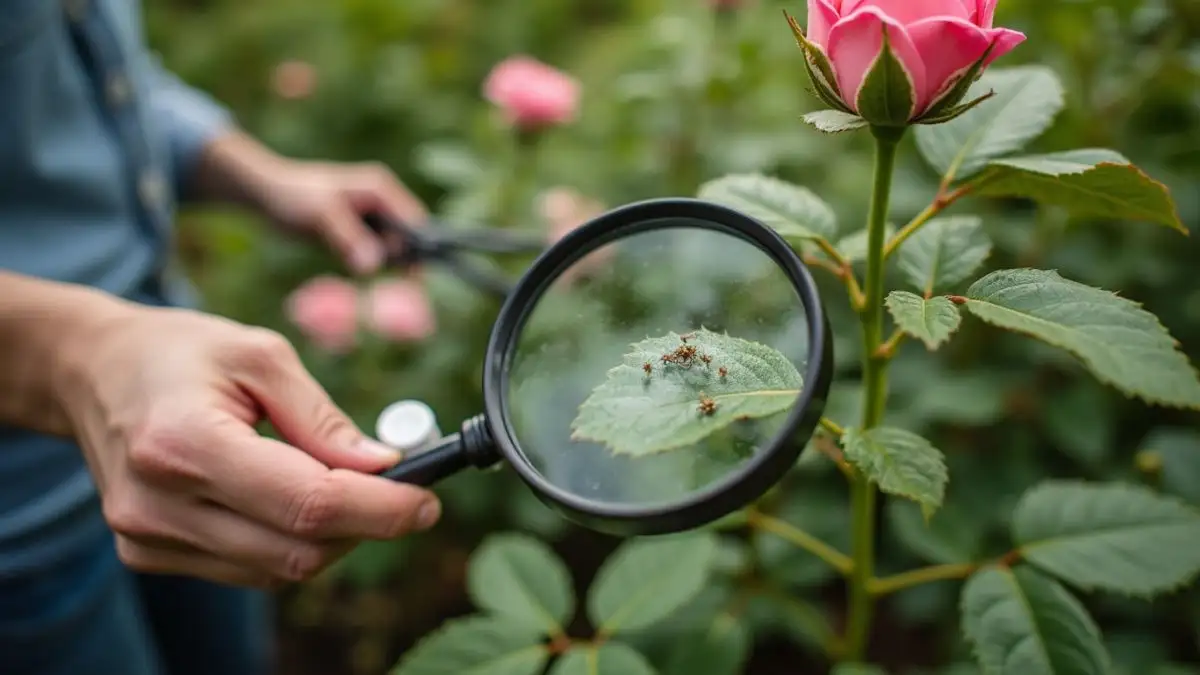
Mini roses can still be affected by pests and diseases. However, with vigilance and timely action, you can keep them under control.
Common Pests:
- Aphids: Treat by spraying a solution of water and mild dish soap.
- Spider Mites: Treat with neem oil or rinse with a strong jet of water.
Common Diseases:
- Black Spot: Remove infected leaves and apply fungicides.
- Powdery Mildew: Promote proper air circulation and water at the base to prevent issues.
Inspect your plants regularly to catch and treat issues early. Preventative measures, such as maintaining cleanliness around the plant and avoiding overwatering, go a long way in disease control.
Year-Round Care for Miniature Roses
Seasonal Tips:
- Spring: Begin fertilizing and pruning.
- Summer: Water deeply and provide shade during extreme heat.
- Fall: Reduce watering and start preparing for dormancy.
- Winter: Mulch heavily and move potted plants indoors.
Consistent care throughout the year ensures your mini roses thrive in every season. With proper attention, you can enjoy their beauty for years to come.ture roses thrive in every season.
FAQ Section
How often should I water miniature roses?
Water 2-3 times a week during active growth and less frequently in cooler months.
Can miniature roses grow indoors?
Yes, they thrive indoors with adequate sunlight or supplemental grow lights.
What is the best fertilizer for miniature roses?
A balanced 10-10-10 fertilizer or organic options like compost tea works best.
Why are my miniature roses not blooming?
This could be due to insufficient sunlight, poor soil, or improper watering.
How do I prune miniature roses?
Use sterilized shears to remove dead or crossing branches and shape the plant.
Are miniature roses prone to pests?
Yes, common pests include aphids and spider mites. Neem oil is an effective remedy.
Can I grow miniature roses in pots?
Absolutely! Make sure the pot has proper drainage and use high-quality soil.
By applying these expert tips, your miniature rose bushes will flourish with beautiful blooms and add vibrant color to your garden. Whether outdoors or indoors, miniature roses bring elegance and charm to any space.


